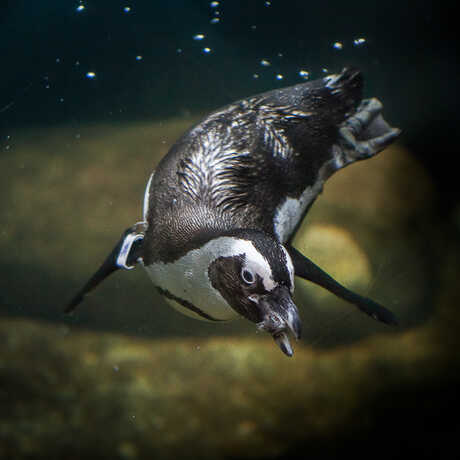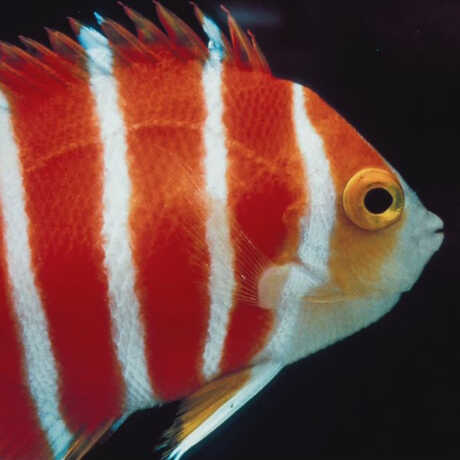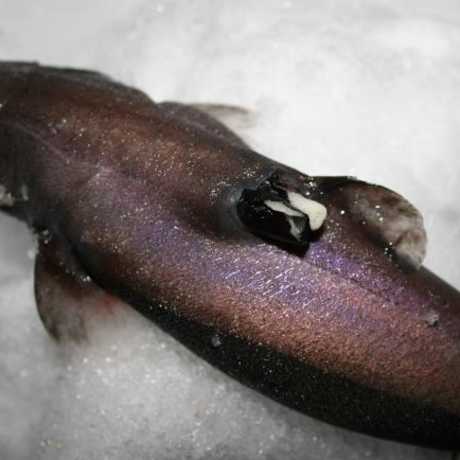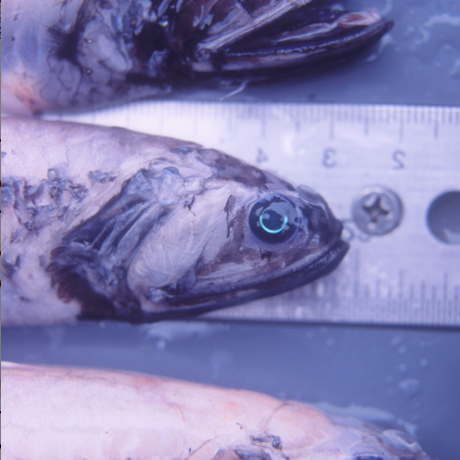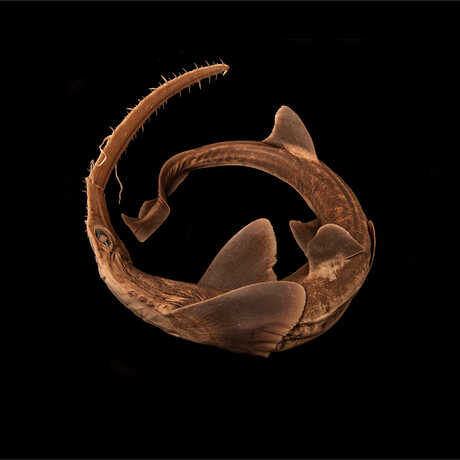H. sagamius lives in the Pacific Ocean at depths of 2,000 to 3,300 feet, where sunlight doesn't penetrate. Food is scarce in the deep, and chance encounters in total darkness are rare, so the footballfish have evolved to feed on whatever fits in its mouth—including other fish, squid, and crustaceans. Using its esca as a lure, an anglerfish remains motionless until prey comes within striking distance. In a lightning-fast motion, it sucks the prey into its mouth, where its teeth—which point inward—ensure that what goes in doesn’t come out.
Our Work
Pacific Footballfish
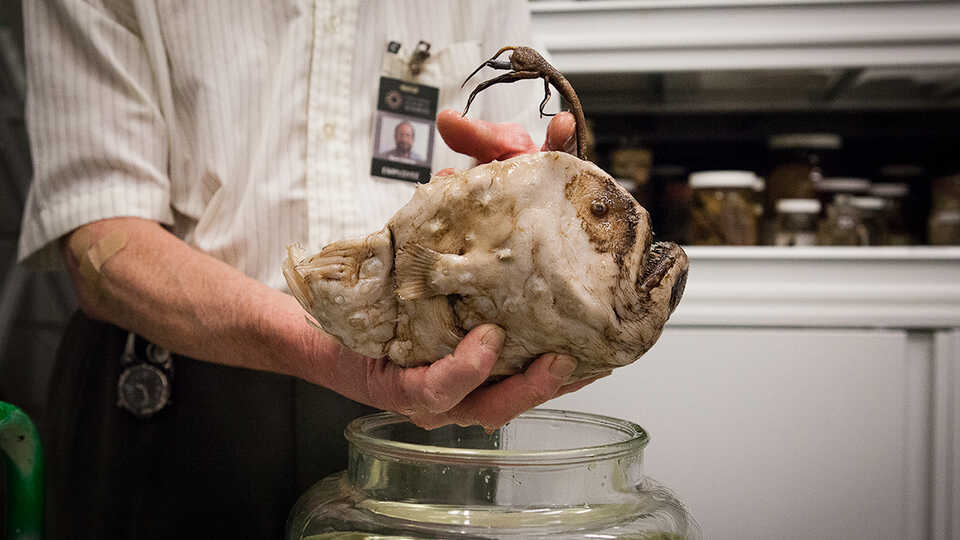
In 1985, deep-sea fishermen in Monterey Bay, California, hauled up their nets to find a menacing-looking fish with a 6-inch-long globular body, prickly skin, needle-sharp teeth, miniscule eyes, and a strange stalk on its head. This was the same Pacific footballfish (Himantolophus sagamius) we now have in our collections, and one of more than 300 living species of anglerfish (of the order Lophiiformes) found around the world.
The first spine of an anglerfish's dorsal fins, called the illicium, extends outward to end in a fleshy, bioluminescent bulb (or esca), which the fish use to lure prey. Male and female anglerfish differ dramatically in size, with some females measuring up to ten times larger than their male counterparts. The males of some anglerfish species, including the football fish, have evolved into “sexual parasites.” Using well-developed olfactory organs, they find and fuse themselves to females, eventually losing their eyes, internal organs, and everything else but the testes. The male becomes a permanent appendage that draws nutrition from its female host and serves as an easily accessible source of sperm.
Angling for prey
Bioluminescent bacteria
The bioluminescent glow of an anglerfish's esca comes from bacteria. These photobacteria (light-emitting bacteria) flow into the esca through small pores; once inside, they multiply due to the protection and nutrition provided by its host.
The Department of Ichthyology is home to one of the largest and most important collections of fishes in the world, and is designated as one of eight International Centers for Ichthyology in North America. Meet the researchers, explore projects and expeditions, and more.
Be mesmerized by colorful coral reef fish, soaring stingrays, and adorable African penguins—streaming live to your device, 24/7.
